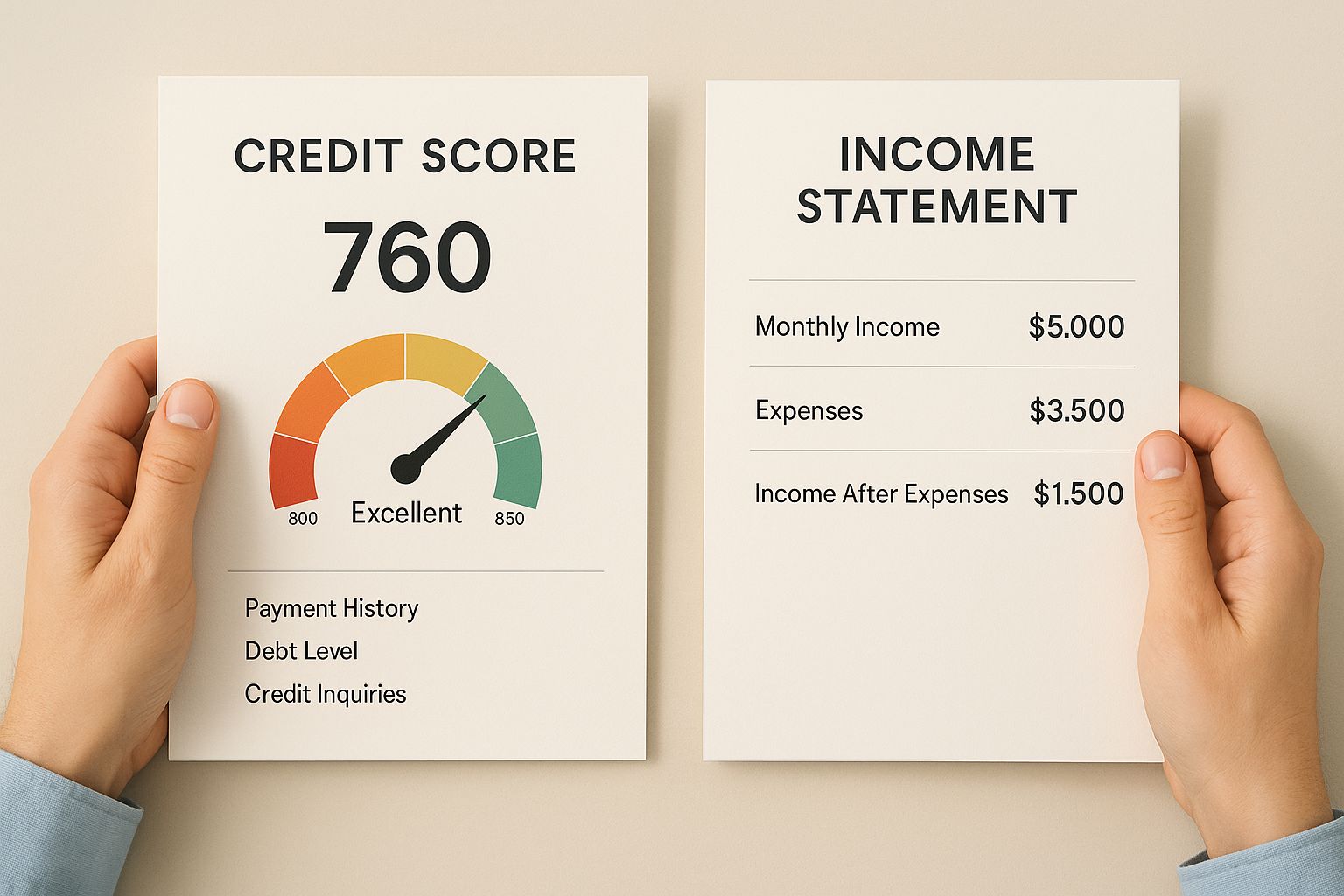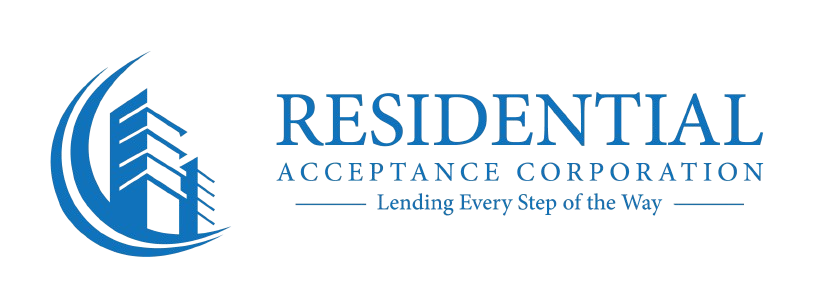For a lot of folks hoping to buy a home, the biggest hurdle isn't finding the right house—it's scraping together the cash for the down payment. But there's a powerful, and often overlooked, solution that can put the keys in your hand much sooner than you think: down payment assistance programs.
The Hidden Key to Buying a Home Sooner

Imagine the path to homeownership is a long road trip. Before you can even start the engine, you have to save up every last penny for gas money (the down payment). It’s a slow, tough journey that can feel like it takes forever. Down payment assistance (DPA) acts like a financial co-pilot, jumping in with the funds you need to get on the road right away.
These programs are built to be a financial bridge, helping you clear that massive upfront cost of buying a home. They aren't just handouts. They are smart, strategic tools created by state and local governments, housing finance agencies, and even non-profits. The real goal is to make owning a home a real, sustainable possibility for more people.
Why Do These Programs Even Exist?
At its core, DPA exists to knock down the single biggest barrier to owning a home: the down payment. With home prices what they are, saving up 3% to 20% of a property's value is a huge mountain to climb for most people and families.
But there's more to it. These programs also help boost local economies and build stronger communities. Think about it—when more people can afford to buy homes, it leads to more stable neighborhoods and more money being spent locally. It's really an investment in the community's own future.
"One of the main barriers to homeownership is coming up with a down payment. For eligible borrowers, one of our down payment programs helps break down this barrier." – Kim O’Donoghue, AVP of Real Estate Sales, Honor Credit Union
Who Are Down Payment Assistance Programs For?
There's a common myth that these programs are only for low-income households. While many are certainly income-based, the rules are often a lot more flexible than you'd expect. Eligibility can easily stretch to middle-income earners who are vital to our communities but struggle to save, especially in high-cost areas.
To give you a better idea, a lot of programs are specifically designed for:
- First-Time Homebuyers: This usually just means you haven't owned a home in the last three years.
- Essential Community Workers: You'll often find special programs targeting teachers, firefighters, police officers, and healthcare professionals.
- Buyers in Designated Areas: Some assistance is tied to buying a home in a specific neighborhood or rural area to encourage growth there.
The main thing to remember is this: don't automatically count yourself out. There are thousands of these programs all across the country. Odds are, there's one out there that could fit your situation perfectly and help you make that dream of owning a home a reality.
Exploring the Types of Down Payment Assistance
So, you know down payment assistance exists. That's a great start. But the real key is understanding how these programs actually work. Not all assistance is a simple cash gift. Instead, down payment assistance programs come in a few different flavors, each with its own set of rules and long-term implications.
Think of it like getting help to buy a car. One person might hand you cash with no strings attached (that's a grant). Another might lend you money that you only have to pay back if you sell the car in a few years (that's a forgivable loan). Both get you in the driver's seat, but the deals are totally different. Let's break down the common types you'll run into.
The Pure Gift: Grants
The most straightforward and desirable form of DPA is a grant. This is just what it sounds like: gift money that you never have to repay.
Because it's essentially free money, grants are usually very competitive. They often come with stricter rules, like lower income caps or being available only to specific groups of buyers. For instance, a local "Hometown Heroes" program might give a teacher a $7,500 grant. That money goes straight toward their down payment and closing costs, meaning less cash out of their pocket at closing. Once the deal is done, the money is theirs, period.
The Second Chance: Forgivable Loans
Next up are forgivable loans. This is a loan that gets erased over time, as long as you meet one big condition: you have to live in the home as your main residence for a set number of years. This period is typically somewhere between five and fifteen years.
Let's say you get a $15,000 forgivable loan with a 10-year term. For every year you live in that house, a piece of the loan is forgiven. Stick it out for the full ten years, and the entire $15,000 balance vanishes. But if you sell or refinance after only five years, you'll probably have to pay back the remaining, unforgiven portion.
This structure is really about encouraging long-term homeownership and stability in a community. The program invests in you, and in return, you invest your time in the neighborhood.
This is a fantastic option for buyers who plan on putting down roots and staying put for a while.
The Pay-Later Plan: Deferred-Payment Loans
A deferred-payment loan is another popular type of assistance. With this setup, you get a loan for your down payment, but you don't have to make any monthly payments on it. The catch? The full loan amount becomes due when you sell the house, refinance your main mortgage, or pay off the mortgage completely.
These loans are often zero-interest or have a rock-bottom interest rate. It’s kind of a "pay it forward" system; the funds help you get into a home now, and you repay it when you're in a better financial spot, freeing up those funds to help the next homebuyer. It’s a great way to keep your monthly budget lean right after buying.
The Companion Loan: Low-Interest Loans
Finally, some down payment assistance programs work as a low-interest loan that you pay back right alongside your main mortgage. This is a second mortgage, but it comes with its own small monthly payment, usually spread out over a term like ten years.
While this does add a little to your total monthly housing payment, the interest rate on this DPA loan is almost always much lower than what you'd get with a personal loan or by using a credit card. It makes borrowing for your down payment much more affordable than other financing routes. Taking a look at different loan programs can help you see how these companion loans might fit into your overall financing strategy.
The great news for buyers is that these programs are becoming more common and diverse. A recent report noted an 11% annual increase in the number of available DPA programs, with over 2,400 now active nationwide. This boom means more choices than ever, including programs for multi-family homes and a 27% jump in programs that don't even have income limits.
The infographic below shows some of the key documents, like your income statements and credit report, that are used to determine which of these programs you might qualify for.

Getting a handle on your own financial picture is the first step. Each type of program is built to help people with different financial situations and homeownership goals.
Who Qualifies for Down Payment Assistance?

One of the biggest myths I hear about down payment assistance programs is that they’re only for low-income households. While helping those with lower earnings is a big part of the mission, the reality is that many programs are designed to help the very people who form the backbone of our communities—including middle-income families who feel completely priced out of today’s market.
Think of it this way: eligibility isn't a single locked door. It's more like a series of gates, and each DPA program has its own set of keys. The trick is matching your personal situation to the program's specific goals. These requirements are almost never one-size-fits-all and can change a lot from one state, county, or even city to the next.
Breaking Down the Core Eligibility Factors
As you start digging into different DPA options, you'll see a few common criteria pop up over and over. Getting a handle on these will help you quickly figure out which programs are actually worth your time.
Here are the most common factors lenders and programs look at:
- Income Limits: This is the big one. Most programs do cap your household income, but you’d be surprised how high those limits can be. It's usually calculated as a percentage of the Area Median Income (AMI) for your specific region. That means what’s considered a "qualifying income" in an expensive city is going to be much higher than in a more affordable rural town.
- Credit Score Minimums: DPA programs are there to help you with the down payment, but you still have to qualify for the main mortgage. Lenders will be looking for a minimum credit score, which typically starts in the low-to-mid 600s. If your score isn't quite there yet, it’s a smart move to focus on ways to improve your credit score with these borrower tips before you apply.
- First-Time Homebuyer Status: Many programs are aimed at first-time buyers, but this definition is more flexible than you might think. Often, it includes anyone who hasn't owned their primary home in the last three years. So, if you sold a house a while back and have been renting, you might just qualify again.
- Property Type and Location: Some assistance is tied to buying certain types of homes (like single-family houses) or purchasing in specific neighborhoods that a city wants to revitalize.
Going Beyond the Basics With Targeted Programs
The world of down payment assistance is full of programs built for specific professions and community needs. This targeted approach helps get support to critical parts of the workforce who might otherwise struggle to buy a home.
A common misconception is that you need a perfect financial record to get help. In reality, these programs are built for hardworking individuals and families who just need a boost to overcome the initial down payment hurdle.
For example, many states and cities offer special assistance for public service professionals. These "Hometown Heroes" programs are often geared toward people like:
- Teachers and school staff
- Firefighters and EMTs
- Police officers and other law enforcement
- Healthcare workers, including nurses and medical assistants
These programs are a direct acknowledgment that these essential workers often face a big affordability gap, especially in the very communities they serve.
On top of that, a growing number of initiatives are aimed squarely at helping middle-income households. A great example is the Federal Home Loan Bank of San Francisco, which dedicated $10 million to its Middle-Income Downpayment Assistance program. This grant helps first-time homebuyers in Arizona, California, and Nevada who earn between 80% and 140% of the AMI. It directly supports those vital community members who earn too much for traditional aid but still can't keep up with high housing costs.
The main takeaway here is to avoid making assumptions. The only way to know for sure if you can get help is to start looking into the specific down payment assistance programs available right where you live.
Alright, you know that down payment assistance programs exist, and that’s a huge first step. But there's a big difference between knowing about them and actually getting that money in your hands at the closing table. It can feel like a maze, but don't worry. We're going to walk through it step-by-step.
Think of it this way: if you try to wing it, you're bound to get frustrated and make mistakes. But if you have a clear plan, you'll end up exactly where you need to be. Let’s build that plan right now.
Step 1: Start Your Search at the Source
Forget generic national searches for a minute. The best DPA opportunities are almost always local, run by your state, county, or even your city. You have to look in your own backyard first.
Your first stop should be your state's Housing Finance Agency (HFA). Every single state has one, and their website is a goldmine for state-sponsored programs. They are the official source and will have all the details you need, including lists of approved lenders.
You can also use a couple of powerful online tools to make this easier:
- Down Payment Resource: This is a fantastic database that plugs right into sites like Zillow. You just pop in your location and maybe your profession, and it spits out a list of programs you could qualify for.
- Stairs Financial: This service acts like a matchmaker, connecting you directly with local lenders who are experts in DPA. It saves you the headache of calling around trying to find someone who knows what they're doing.
Step 2: Find a DPA-Approved Mortgage Lender
This is a non-negotiable step that trips up a lot of homebuyers. You can't just go to any bank or mortgage lender. Most down payment assistance programs demand that you work with a lender who is officially approved and trained on their specific rules.
Why? Because these lenders know the ins and outs of the extra paperwork and complex requirements. If you try to use a lender who isn't on the approved list, you’re setting yourself up for major delays or even an outright rejection. Your best bet is to ask the HFA for their list of approved lending partners.
Working with a DPA-approved lender isn't just a good idea—it's a requirement for most programs. This person is your expert guide, making sure your main mortgage and your DPA application are handled correctly and submitted together.
Step 3: Gather Your Essential Documents
Once you've teamed up with a lender, it's time to get your financial life in order on paper. The organizations providing DPA are investing real money in your purchase, so they need to see a complete and honest picture of your finances.
Get ready to pull together the usual suspects:
- Pay Stubs: The last 30 to 60 days should do it.
- Tax Returns: Plan on providing your last two years of federal returns.
- Bank Statements: Two or three months of statements for every account you have.
- W-2s or 1099s: Again, from the last two years.
- Photo ID: A current, valid government-issued ID.
Having all this ready to go from day one shows you're a serious, organized buyer and will speed everything up.
Step 4: Complete Required Homebuyer Education
Don't be surprised if the DPA program requires you to take a homebuyer education course, especially if you're getting a grant or forgivable loan. This isn't just busywork. These courses are designed to make you a smarter, more successful homeowner. You'll learn about budgeting for a mortgage, managing your credit, and even the basics of home maintenance.
These classes are usually online and only take a few hours to complete. You'll get a certificate at the end, which is a mandatory part of your application. Don't put this off! It's a small time investment that proves you're committed to this journey.
Weighing the Pros and Cons of Using DPA
Down payment assistance programs can be a game-changer for anyone trying to buy a home, but it's crucial to look at the whole picture before you commit. Think of it like any other powerful financial tool—it can work wonders when you know how to use it, but you need to understand all the moving parts.
Taking a balanced view helps you make a choice that fits your long-term financial health, not just your immediate desire to get the keys to a new house. Let's honestly break down the good and the not-so-good so you can decide if DPA is the right move for you.
The Clear Advantages of DPA
The most obvious win here is getting into a home way faster than you could on your own. Saving for a down payment can feel like a mountain to climb, often taking years. DPA can shrink that timeline down to a matter of months. That means you start building your own equity and personal wealth sooner rather than later.
Another huge benefit is that you don't have to completely drain your savings account. Using assistance allows you to keep a healthy emergency fund for those unexpected homeowner surprises—like a leaky roof or a broken water heater. Having that financial cushion right after you move in provides peace of mind that’s truly priceless.
The biggest pros really come down to this:
- Accelerated Homeownership: You can buy a home now instead of waiting years to save. This lets you start building wealth through home equity right away.
- Keep Your Savings: Avoid wiping out your cash reserves. You’ll have a proper emergency fund for any unexpected costs that pop up after closing.
- Lower Upfront Costs: This one’s simple. You need to bring a lot less cash to the closing table, which makes buying a home feel much more achievable.
Potential Drawbacks to Consider
Now for the other side of the coin. Accepting these funds can add a few layers of complexity to the process. It's rarely "free money" with no strings attached, especially if it's a second loan instead of a true grant. Understanding these potential hurdles is key.
For example, some lenders might offer a slightly higher interest rate on your main mortgage to cover the risk and extra administrative work involved with a DPA program. It doesn’t always happen, but it’s something you have to watch for when comparing loan estimates. You’re also adding another financial layer to manage.
While DPA makes homeownership possible for many, it often involves a second loan with its own set of rules, paperwork, and long-term commitments that you need to be prepared for.
Here are a few potential cons to keep on your radar:
- Higher Interest Rate Potential: Your primary mortgage could come with a slightly higher rate than a loan without DPA. You need to factor this into your total long-term cost.
- Added Complexity: You're often juggling a second loan, which means more paperwork during the application process and another monthly payment or future obligation to track.
- Resale or Refinance Restrictions: Many forgivable and deferred DPA loans have residency rules. If you sell or refinance before a certain amount of time passes (often 5 or 10 years), you might have to pay back the assistance in full.
To lay it all out, here’s a straightforward comparison of the good versus the potential headaches.
Pros and Cons of Using Down Payment Assistance
Taking a moment to see the benefits and potential drawbacks side-by-side can make the decision much clearer. This table gives you a balanced look at what you gain by using DPA funds versus the trade-offs you might have to make.
| Benefit | Potential Drawback |
|---|---|
| Buy a Home Sooner | More Paperwork and Steps |
| Keep Emergency Savings | Potentially Higher Mortgage Rate |
| Lower Initial Cash Outlay | Resale and Refinancing Rules |
| Start Building Equity Now | Added Complexity of a Second Loan |
For the vast majority of homebuyers who use these programs, the massive benefit of getting into a home and starting their financial journey far outweighs the potential downsides. The key is just to go into the process with your eyes wide open, fully aware of how it all works.
Frequently Asked Questions About Down Payment Assistance
Let's be honest, the world of down payment assistance programs can feel like a maze. When you're trying to buy a home, the last thing you need is more confusion. Getting clear, straightforward answers is the key to moving forward with confidence.
Here, we'll tackle some of the most common questions we hear every single day.
Do I Have to Be a First-Time Homebuyer to Qualify?
Not always. While a ton of programs are built for first-time buyers, you'd be surprised how flexible that definition can be. Often, it just means you haven't owned a home in the past three years.
Plus, many programs are popping up specifically for repeat buyers. This is especially true if you’re looking to purchase in a designated community revitalization area or if you work in a specific field like teaching or healthcare. The golden rule is to always check the specific requirements for programs in your local area.
Will Using DPA Give Me a Higher Mortgage Interest Rate?
It's a possibility, but it's definitely not a given. Some lenders might propose a slightly higher interest rate on your main mortgage. Think of it as a way to offset the administrative work and risk that comes with managing the DPA loan. It's one of the potential trade-offs.
On the other hand, many programs, especially those from state housing finance agencies, come with very competitive, standard interest rates. Your best bet is to look at the whole picture—compare the total loan costs with and without DPA to see which one truly saves you money in the long run.
The real goal is to evaluate the entire financial package. A slightly higher rate might be a small price to pay if it means you can buy a home years sooner and start building equity right away.
Can I Combine DPA With Other Financial Help?
Yes, and when you can, it's a game-changer. This is a strategy often called "stacking," and it can seriously slash your out-of-pocket expenses. For example, you might be able to combine a state-level DPA grant with a seller credit that covers your closing costs.
But—and this is a big but—every program plays by its own rules. Some allow stacking, others don't. Your DPA-approved mortgage lender is your best resource for figuring out how to legally and effectively layer different funds. If you want to dive deeper, you can find a ton of helpful info by reviewing common mortgage questions that cover all sorts of home financing topics.
Is DPA Only for Single-Family Homes?
Absolutely not. As housing markets have changed, so have DPA programs. To tackle affordability and give buyers more options, a growing number of down payment assistance programs now support buying different kinds of properties.
This often includes:
- Multi-family homes like duplexes and triplexes
- Condominiums and townhouses
- Manufactured homes
This is fantastic news for buyers because it opens up so many more doors to homeownership. Just make sure you double-check the fine print on local programs to see which property types are good to go in your area.
At Residential Acceptance Corporation, we do more than just process loans. We specialize in guiding homebuyers through every single option, including the wide world of down payment assistance. Our team is here to find the right financial strategy for your unique situation, so you can finally achieve your dream of homeownership. Start your journey with us today!

